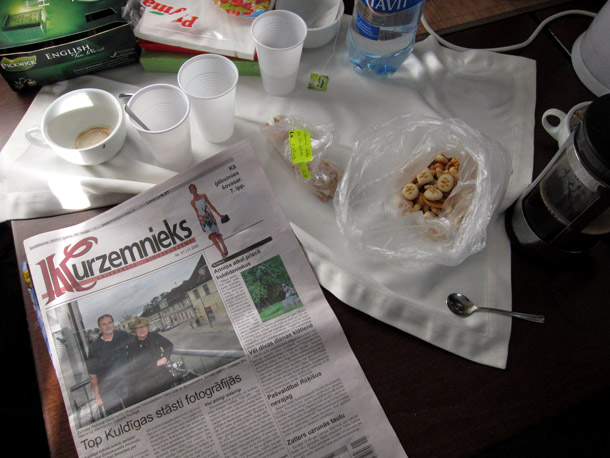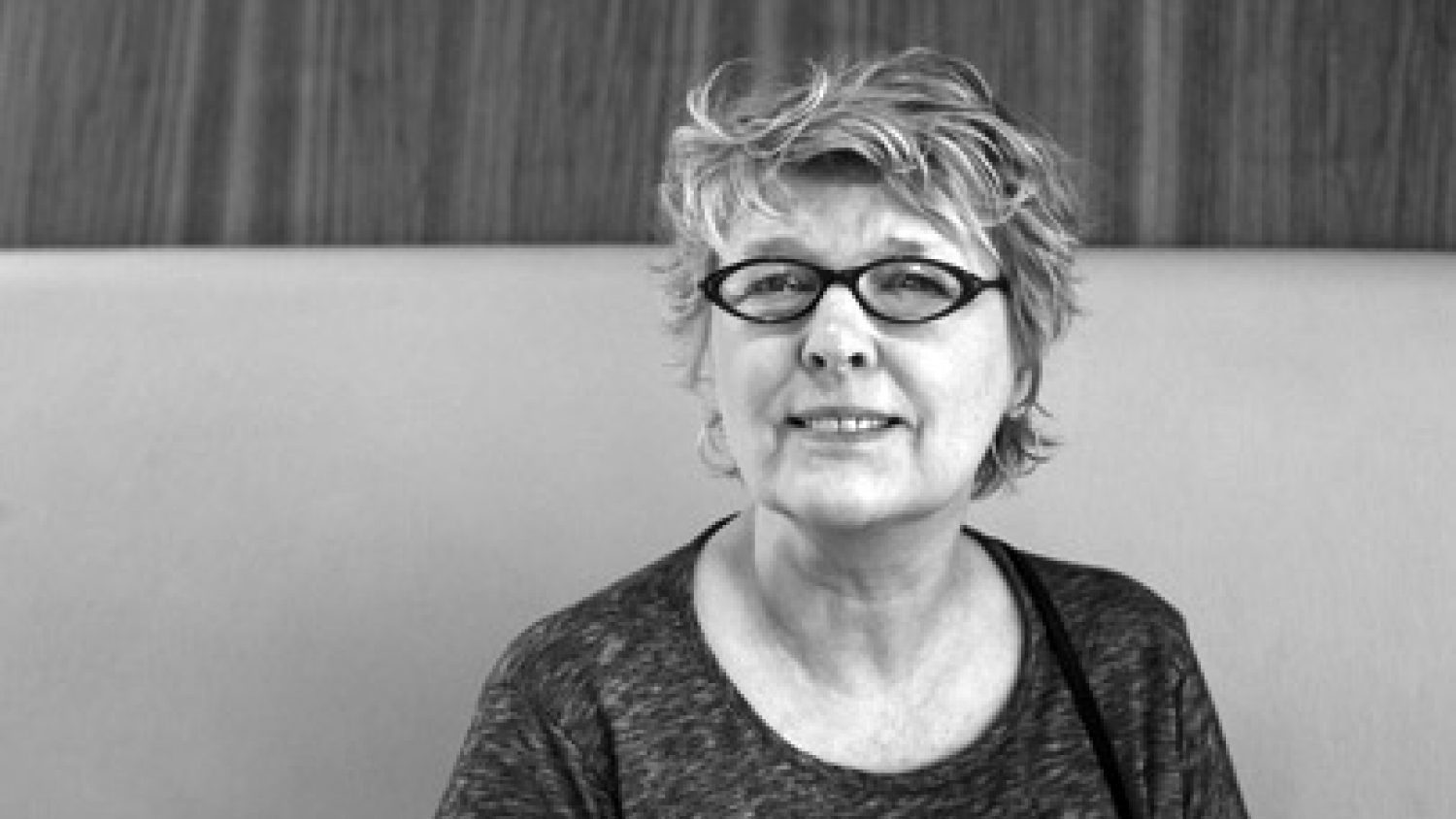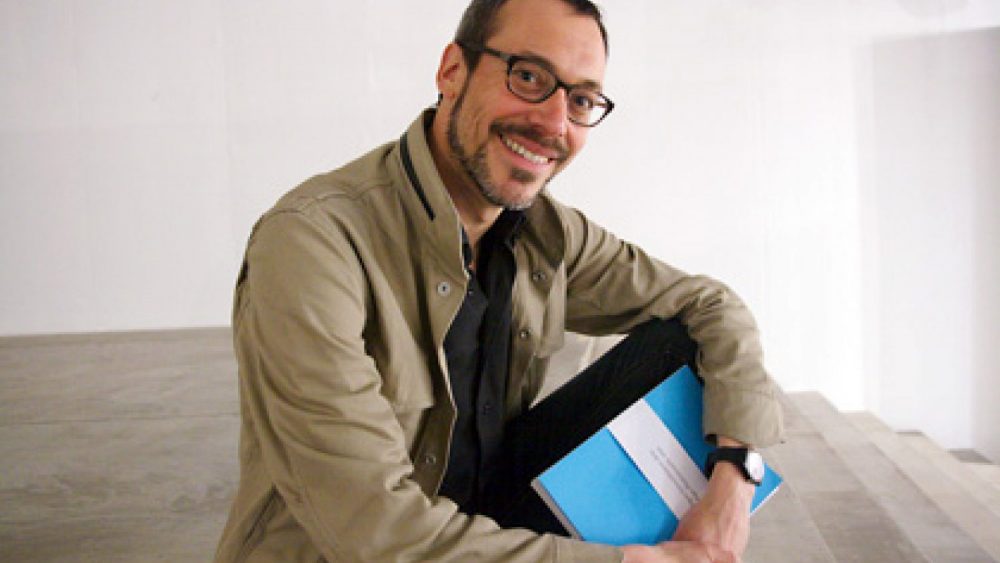Sarah Leen: I love this job!
I meet Sarah Leen (1952), a senior photo editor for National Geographic magazine, at the hotel Riga, straight after her radio interview and a moment before she leaves for Belarus. She smiles, makes herself comfortable in the chair, but before answering the interview questions, gives a deep sigh – the days spent in Latvia have been intensive. Together with her colleague Bill Marr, creative director of the magazine, they organised the documentary photography workshop “Stories from Kuldiga” in Kuldiga, whereas the presentation on photography and photo editor’s work at the magazine hosted by Sarah at the contemporary arts centre kim? gathered unprecedented numbers of audience. No wonder – National Geographic is one of the best-known magazines in the world, where high quality photography plays an important role. Sarah’s presentation at kim? was followed by loud ovations and one could nearly hear “one more” as if in a concert.
Where did this strong determination to work at National Geographic magazine come from?
It’s just one of those places where you can do photography and get it published, a place that respects photographers in different ways – you’re more than just a picture-taker. You’re also a reporter on the story as well, so you have more responsibility and authorship for your story. Not many magazines work that way, it’s a special chance to work like that. It’s always been a magazine for photojournalism and photography in America. A lot of people have that dream, especially in photo schools – the magazine is one of those places where you would love to work one day.
Did you go to a photo school?
I went to a journalism school, but it had a big photography programme, so you get a degree in journalism but it’s a speciality in photojournalism.
You started as an intern at National Geographic. Does the magazine still run the programme and how is it today?
Yes, I did one internship and then I left and worked in newspapers for about ten years. Then I came back and worked as a freelance photographer. The magazine still has a summer intern programme. We have one or two every summer, sometimes we would have one in the summer and one in the fall, it depends on photographers’ schedules. You can send in the portfolio, which we look at, or there is also a college contest and one of the prizes is an internship. That’s how I got there.
You have worked at National Geographic for such a long time. What is that particularly worthy thing that you never wanted to change the employee?
It’s that special type of way how we work with the photographers. They are special for us and it’s important to get them involved in the editing and layout processes. It’s not like the photographer just gives the images and then sees the magazine ready. They are involved in all the actions. And even if the photo editor has a chance to work with the photographers like that, as a partner in creating the story and you get to look at their film, they don’t just send in a selection. You get to look at everything! As a photo editor, I get to work on the design at the beginning when we are figuring out exactly what the story is, so I get to be involved. I’m not just picking pictures and giving them to somebody else. So, it’s really special to be able to do that and also meet all the photographers and spend time with them. I love it!

What is a typical National Geographic reader?
Male in his 50-60-ies, higher income, better education. Even if the subscription is only $15!
How does National Geographic live in the modern era when so many editions go online?
We have a website as part of the National Geographic Society where you can see all the pictures and read the stories. Now, since last year, we also have this tablet version of the magazine. It’s all interactive, there are videos. But we still have like 5 million people subscribing to the magazine in English and then another million and a half in 34 languages, so that’s a lot of printed copies. So, the modern technologies, it’s just the beginning. We don’t know yet where it will go. Not so many people own these devices.
In 1982 National Geographic published a manipulated photograph where two pyramids were moved closer together, so they would fit on the cover. It created an important discussion about reliability in photojournalism. Was it scandalous also within the magazine?
It was a big mistake! (Laughing. Bill adds: “It didn’t happen!”) People have been doing manipulations for photographs since the beginnings of photography. Eugene Smith and Dorothea Lange manipulated their pictures, but for us it was the first time and it was the cover. It wasn’t good, but it happened. Since then, it’s very careful, and we have many rules what we can and cannot do to make sure nothing like that happens again. We try not to change anything in the reality and just show the world how it is. And you don’t want to loose the trust of your readers about what they are seeing; people are watching very carefully.
How long does a photographer usually work on a story?
It depends on the story but it can be from weeks to months. Stories that involve animals and natural history take a lot longer, so those can be a few months and not all in one trip. We just look at the story and decide how much time is needed, when it’s the best time to go depending on the story.
When making a story for a certain number of pages in the magazine, you have to cut down a huge number of images. Does National Geographic have any power to stipulate that work can be shown as a whole – in a published edition or in the exhibition?
90 days after a story has been published, we give everything back to the photographer. We maintain a lot of rights to the photographs we publish, but everything else goes back to the photographer and they can do whatever they want. We do have a book division but they do more guidebooks than monographs. Most of the photographers go to other publishers to do their books and if there is anything how we can help them, we do. For example, some of our editors help to edit their books. As for the exhibits, we have our own gallery where we do exhibitions and some of the photographers’ stories are selected, but most of the exhibits that we do, are organized around a theme. As when we did the water issue, we did the collection of pictures from the water topic. Most of the photographers have their own gallery representation and they go to their own galleries and they sell their prints in there.
You’re mostly working with a story. How important is one image and how much can it tell?
At the beginning of each magazine there is a section called Visions of Earth, which consists of three single pictures. I also work on that section. A lot of images are not made within a sequence. But in our stories, usually they are about one topic. However, when you do a big story on something, let’s say, about Bangladesh, when you’re spending weeks and weeks on it, you’re creating smaller stories within the big story. There is a little story about the rice farmers, about the slums, about the coast, but to make the story, we can only take one image from every little story. The single image is very important because it’s going to tell us about that aspect of the story.
During the presentation at the Contemporary Art Centre kim? you said that the magazine is careful about involving new photographers as it demands a big readiness – experience, personal qualities and skills from the photographer and time from the editor. Do you have photographers who haven’t yet worked for National Geographic but you wish to collaborate with?
There are a lot of them! I often see work that could fit in the magazine. I am looking all the time at different photographers’ work, seeing if there is a project they are working on that we could use or help to finish a story. But I am always looking in a broader context – if there is a photographer with the right skills, we need to find the right project for him. We show so many different stories except the photojournalism – we have archaeology, sciences and animal stories. It’s just a piece of what we do that we can call a classic photojournalism. Sometimes it takes a while to find the right thing for somebody but we always want to give the right assignment.
Have you ever got a refusal?
Actually I did recently, but he was somebody that hasn’t worked for us before and he is a kind of an art photographer. I thought of him in a last minute. It wasn’t a big assignment, but he was so busy doing other things. He said he didn’t want to rush the first assignment for us and not to be able to do the best work. But I understand him, I wish I would have thought of him earlier. Maybe in the future we can collaborate.
What are the criteria of a story to be published on National Geographic?
If we assign a story, it’s going to be published, but if somebody brings us a story, there are several things. It shouldn’t be about something that we have published recently already. Then, it should be something about what we do – there is a lot of good journalism out there, but it’s not quite us. The photographer has to understand what we need. He needs to know what our stories are about – that they got something cultural or it’s about some environmental issues, or it’s about an interesting place. We don’t do a lot of black and white, rarely only portraits.
If you could make a story now, what would you work on?
(Laughs) I haven’t thought about that! I could go to some places I haven’t been to, for example, Scandinavia, as my dad’s family is from Norway, but I don’t know anything particular… I wouldn’t mind going back to some places to see how they have changed, like Siberia. It’s a difficult question. I haven’t photographed in a while!
What are your pros and cons as a photo editor who has been working as a photographer for such a long time?
I know how it is like to be there, so I can have some understanding of the process and challenges, of what you can and cannot do. I can have sympathy and open-mindedness. But then, on the same side, because I know how it is like, I am demanding – I know what is possible! If somebody says that it is impossible, I answer that he needs to figure out how to do it! Maybe then one of the cons is, when I see the story and think – I can do that – but I want them to be better than I am. I want them to inspire me. I want to look at the pictures and say: “I could never do that!” I want to be looking at images that I wish I took.
What is the biggest challenge for you as an editor?
Time management! I have a lot of stories going on at the same time, they are at different stages. When I get back, I’ll have at least two stories – about 11 000 pictures for each. But then I have a project for which we are still looking for the ideas, plus one in the production, then one photographer will be coming in to look at the layout… There are stories waiting for me to start, then I have to find time to read about. It’s just a lot. I have to think ahead.
Who is writing for these stories?
There is always a writer assigned for every story, some of the ideas are coming in from the writers. Sometimes they go together, like one story we have going on now in Peru. It depends on a story, but if there are a lot of difficult places to get to, it’s facilitative to go together. The other times, they can be only in touch and talk about what they are doing.
Do you also have writing photographers who do both?
Not very many, it’s not very often that we have them to do both. But we now have some that are doing photography and video, so we have a few who are working in those two media.
What other magazines are you reading?
I read The New Yorker all the time but it doesn’t have a lot of pictures. I look at a lot of things online – blogs, online photo magazines, for example, Conscientious or Photojournalismlinks. In National Geographic there is an interesting section that they don’t do every month called Photo Journal. It’s a place where we publish somebody’s project that doesn’t have to be a traditional National Geographic story. It’s another section that I do, so I’m constantly looking for these little projects. That’s a place where I could put a great portrait series. It is also a place where a photographer is interviewed and where they talk about the project. It is not as much about the story as about the photographer and his project. In June’s issue, for example, there is this Italian photographer Guido Mocafico and he did the pictures of snakes. He puts them in a box and the snakes take the shape. The box itself is not visible, so it looks like a chunk of snakes. It’s amazing. When I saw it for the first time, I thought – it is like us because it is still animals in a way but it’s completely different in technique and the way he does it. It’s us but more fine art.
What is the most valuable knowledge you have gained after all the journeys?
I think it’s so important to get outside of your own country, even of your own town, because it is the only way to understand other people, other cultures and realize that, even though we look different, we eat different food or have different customs, there is something right there at the bottom. There are mothers, sisters and fathers – some things are so much the same. You can communicate amazingly even if you don’t speak the language. You know, Americans in the way of living are actually a minority in comparison with the rest of the world. It is really important to see and experience how different people live.

What was your experience in Kuldiga?
We worked really hard, and the students did an amazing job! It is a great town, very welcoming, they knew we were there and opened up. If we had more time, the result would be even better, because it takes a couple of days to relax and understand what the project is. Even so, we did a really good job. Students were amazed of what they did themselves!
Do you often give master classes?
I used to do a lot more. When I was a photographer I had time in between the assignments and I used to like teaching. When you are out working as a photographer, you’re a lot on yourself or with people you’re photographing. So I liked to share, work in the team and spend my time with other photographers, as in a community. Now, when I go to do workshops, it’s like doing the same work as every day. This workshop in Kuldiga was the first one I’ve done in a while!
The material was created in cooperation with ISSP



